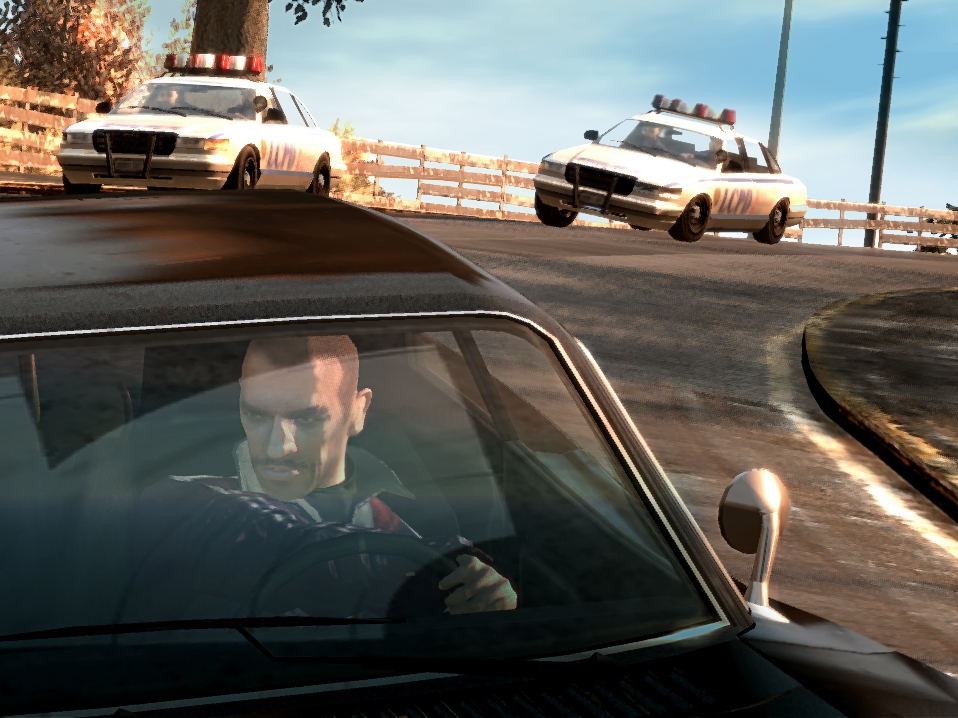How to make an iconic videogame
Elite's and GTA's designers reveal their secrets

It is a rare thing indeed for a modern-day videogame to be critically accepted as truly 'groundbreaking', despite the number of times that particular adjective is abused by games mags and websites the world over.
Yet TechRadar has just been treated to a talk by two designers of the British games industry's biggest games of all time.
David Jones and David Braben, both recently voted into a list of the top 10 greatest developers, were giving a short presentation at this year's Develop conference, each playing the other's best-known game (Grand Theft Auto and Elite, respectively) and sharing their thoughts on what made both games legendary.
Both games – despite being from different eras - featured huge open worlds that gave the player a sense of total freedom to do what they liked, to create their own stories and inhabit their own, fantastically escapist alternative worlds.
And both games inspire that look in the eye of gamers of a certain age...
"Elite was criticised back in 1984 for its 3D graphics," admitted Braben. Ironic really, when you consider, as David Jones does, that the original GTA also received flack from games publishers and hardware manufacturers in the late 1990s for being "a 2D [top-down] game in the 3D world of PlayStation."
Elite took Braben and his partner eighteen months to complete from start to finish, which he admits "felt like a very long time back then", but publishers were not initially overimpressed with the pair's immense space-trading 3D fantasy game.
Sign up for breaking news, reviews, opinion, top tech deals, and more.
"The initial response from publishers was very negative," he recalls. "At that time [1984] there were lots of Pac-Man, Galaxians and Space Invader clones on the market. There was a 'coin-op mentality' whereby if a game didn't have a playtime of ten minutes max, with three lives, then publishers weren't interested."
Not bad, really, for a game that went on to sell more copies than there were BBC Micros on the market at the time. "Kids were buying them and taking them to school to play at their computer clubs," Braben fondly recalls.
The joy of docking
As David Jones clumsily flies an Elite Ship near to the anarchist planet of Riedquant, there is laughter from the Develop audience at the fact that he is having trouble making the ship go left or right.
Which reminds us of one thing: games were loads harder back then!
"It takes quite some dedication to get into a game of Elite," admitted Braben. "But then again, after waiting twenty minutes for the cassette to load, gamers were perhaps a little more patient than they are now!" he jokes.
In addition to fighting enemy ships, all of which were named after various snakes ("they had the most types in the Thesaurus" says Braben) the other key mechanic of Elite was having the ability to scoop up your enemies cargo and also to trade in a number of both legal and slightly dodgy cargo.
"The fact that you could also choose to become a pirate and a smuggler quickly became a central mechanic," says Braben. "Controversially, particularly because this was the BBC Micro, we put in slaves, firearms and narcotics."
Courting controversy
Still, despite all that, and despite the fact that Elite went on to become one of the biggest selling games in history at that point, there was little controversy around the game. GTA however...
"Oh the controversy aspect [of GTA] was completely built-up," admits David Jones. "It was used as marketing for the game. We employed Max Clifford who, once he saw the game, was a little bit disappointed [with its cartoony style]. So he just never let us show the game."
